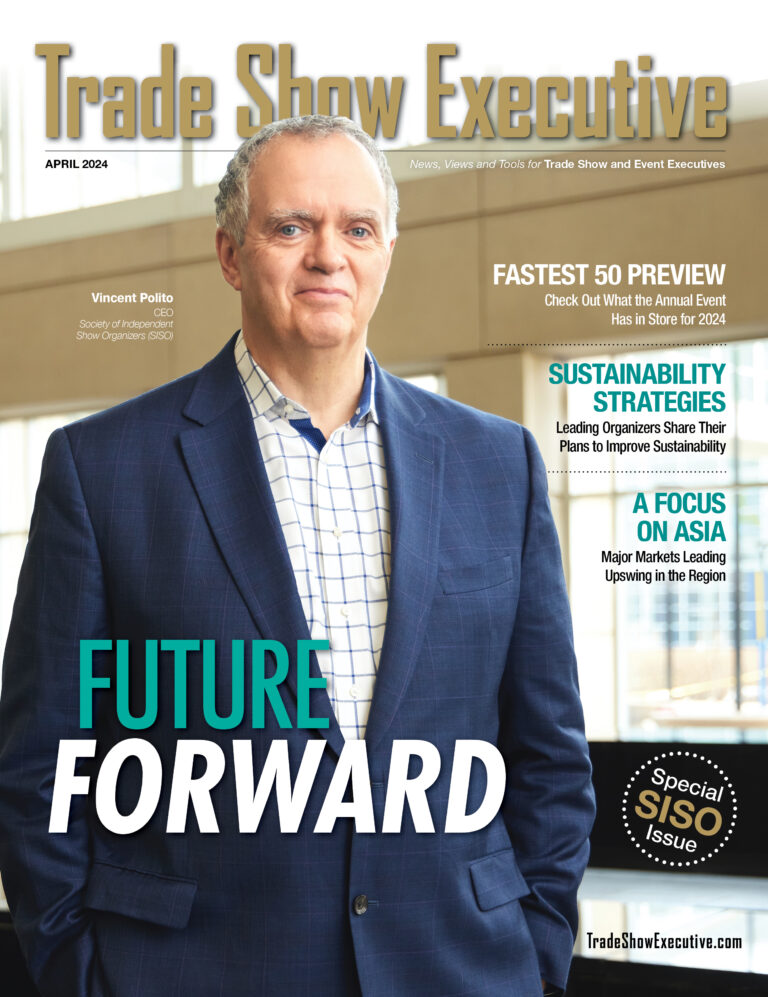
ST. PETERSBURG, RUSSIA— UFI’s Global Congress provided reams of solid information about the state and future of the exhibition industry. Trade Show Executive put together a sampling of the best quotes, trends and stats we saw and heard at the multiple sessions conducted throughout the four-day event held at the EXPOFORUM Convention and Exhibition Centre.
- Finding uncommon partners. Russian Cosmonaut Sergey Ryazanskiy, who presented the opening keynote, launched a mission to the International Space Station in 2013 along with NASA astronaut Michael Hopkins. The two worked side-by-side in the Kibo laboratory of the ISS during Expedition 37. “If we can work together in space, we can work together on Earth,” Sergey said.
- The end of digital distinction. “Don’t use digital anymore,” said Jo-Anne Kelleway, CEO of Info Salons Group. There is no longer a distinction between digital and offline experiences, she said. For today’s generation, digital is part of every experience.
- Replace festivalization with relevant experience. “I don’t like the word ‘festivalization,’” said Reed Exhibitions CEO Chet Burchett. The idea of increasingly trying to be an entertainment venue is dangerous for B2B events, which produce business outcomes, he said. “There’s nothing wrong with the idea of having a better experience, but I would replace the word ‘festivalization’ with experience — relevant experience. I think that’s got to be the focus.”
- Driving the customer journey. “We are using event technology to customize the journey for individual attendees,” said Kelleway. “It’s driven by industry and by geography. What we do in China is different than what we do India. For example, the experience for the CEO is different than the experience for a young professional at the same industry event.”
- M&A activity higher than ever. In 2017, mergers and acquisitions valued at nearly $3.5 trillion were completed, and the robust M&A activity has continued in 2018, said Economist Stephane Garelli, Professor at the University of Lausanne. “We are seeing a considerable redistribution of corporate ownership,” Garelli said. The question he left unanswered: How will this activity impact the global exhibition industry in the short- and long- term?
- Threat of PE entering the industry. Beyond economic and political pressures on the industry, Easyfairs CEO Eric Everard said a bigger threat is the amount of private equity (PE) pouring into the exhibitions business globally. “It’s driving up prices,” Everard said. “If you pay 12x or more than EBITDA (earnings before interest, taxes, depreciation and amoritization), you are going for 4% return on your investment after taxes. It’s not sustainable. It’s going to increase prices and reduce quality. I don’t like that our customers are going to pay more, and the service is going to be less. It will not be good for our industry. That’s a bigger threat to me than external factors, like trade and tariffs, where we are quite resilient.”
- Business + personality = Emotional response. “Most customers are willing to share their personal data,” said Miranda Martin, Portfolio Director, Niche Events, Fresh Montgomery. Use that data to profile your audience and provide content streams specifically for them, she said. “Design experiences for an emotional response based on their business and personality profiles,” Martin said.
- Mixing entertainment with business. According to the Global Visitor Insights study by Explori, 88% of CEOs age 34 and under think both business objectives and entertainment are important. They are also much more likely to spend more time at shows that are entertaining, said Sophie Holt, Global Strategy Director, Explori. The research is based on responses from 13,000 visitors from 135 countries.
- Survey reveals opportunities lacking for women in the industry. According to a joint research project between UFI and m+a, more than half of the female respondents did not feel treated equally when it comes to salary and career opportunities, and more than one-third believe they are held back from having more responsibility. “Women clearly make up the majority of the workforce in the trade fair industry, but they only represent a minority of the leadership,” said Dr. Gwen Kaufmann who led the project.











